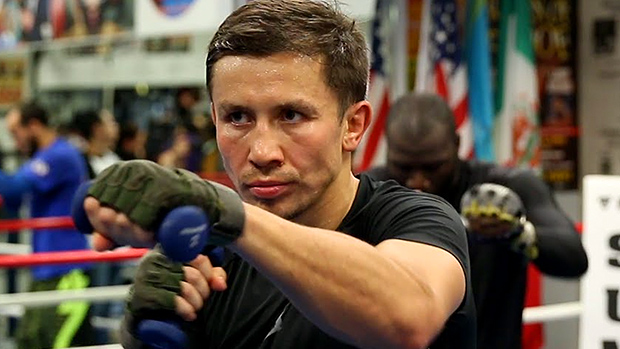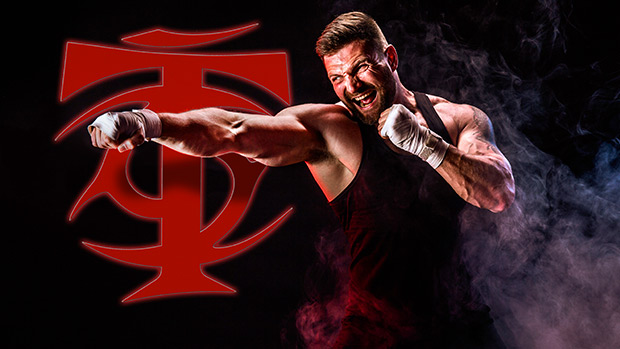Whether it's acting in self-defense or trying to win in the ring, powerful punches are the best tool in a fighter's arsenal. So it only makes sense to develop those punches as much as possible, and there are a variety of ways to do that.
Before performing punch-specific movements, though, you should make sure that you first establish a strong foundation by using the big, basic lifts. There's a reason why squats and deadlifts are part of almost every training plan of any sport.
Also, before training rotational power, make sure your core can handle the loads imposed by the big lifts by regularly using anti-rotation exercises like the Pallof press or the inverted single-arm row.
The primary objective of our core muscles is to protect the spine from violent rotational movements. Since punching involves violent rotational movements, you'll need to be able to properly control and stop those forces without injuring yourself.
With that said, here are some exercises you can include in your program to take your punches to the next level.
The reason the floor press is such a good exercise is because it strengthens the front delts and triceps, which play a key role when delivering a punch while protecting the shoulders and pecs from injury (since the range of motion won't allow them to overstretch).
Lie flat on the floor and keep your legs straight and wide apart so that the upper body is completely isolated. Grab the bar. The width of your grip should be narrower than that of the bench press. Lower the weight slowly, in a controlled manner.
At the bottom, your elbows should touch the floor at a 45-degree angle. Then, explode up and repeat.
Keep the reps between 2 to 5. To develop power, the load should be around 70 percent of your current reps max. So if you're doing 3 reps, use 70 percent of your 3-rep max. Perform 3 to 4 sets.
Another great exercise that mimics the straight punch is the landmine punch. Place the bar in the landmine/angled position, assume your fighting stance, and grab it with your lead hand. Push the bar away explosively, following its path at about 45 degrees, and lower the weight back slowly.
Always remember to keep the other hand up, guarding your face, just as you would in a fight. When you're finished with the jab, switch hands and work the cross punch. In this case, the body will rotate more.
The load should be around 70 percent of your current reps max. Perform 3 to 4 sets of 2 to 5 reps.
Developing rotational power is what striking is all about and the med ball rotational throw is a great exercise for doing just that.
Grab a med/slam ball and assume a fighting stance while standing laterally next to the wall. Keep the elbows in and the ball at chin height. While maintaining a rigid core, rotate your hips and throw the ball towards the wall as violently as possible, following through with your trailing hand.
Retract the hand to the guard position, exactly as you would after delivering a punch. The objective here is to utilize the obliques and transverse abdominals to transfer the force to the outer extremities. When switching sides, switch your fighting stance as well, so that you always throw the ball with your trailing hand.
Do 3 sets of 5 reps on each side.
The hips play a major role in producing knockout hits, and the single-leg lateral bound is a great way to learn how to create torque.
Begin from a normal standing position and take a step back with one leg. Sink your body and load the front leg, but make sure you're sitting back into the hip, not leaning forward on the knee. Just before you execute, lift the back leg from the ground, shoot your hips through, and jump.
Rotate in the air and land with both feet facing 90 degrees perpendicular to your starting position. Make sure you stick the landing in a stable position, properly absorbing the force.
This movement again forces you to work the muscles of the transverse, but you're also working the lateral chain because you're pushing off of the hip.
Perform 2 sets of 8 reps on each side.

Shadow boxing with dumbbells is not only useless for developing punching power, it'll also hurt your technique and probably cause injuries in the long run.
First, the biomechanics of the exercise are completely wrong. Gravity will always pull the weight vertically towards the ground, while punching is of course a horizontal motion.
Since you're not pushing against the resistance, it's not only worthless in developing strength, but your punching technique will also suffer greatly.
The nervous system will change the way the punch is performed in order to overcome the added resistance, usually by creating a habit where you drop the hands during the retraction, and all this while getting accustomed to punching slowly.
Some will argue that you can use very light dumbbells to simulate wearing gloves, but if that's the case, why not simply train wearing gloves?
Another variation many use is punching while holding a band that's strung around the back so that the resistance is in fact horizontal. This also makes little sense. The band will exert its maximum resistance exactly at the end range of the punch, the point where you need to produce maximum acceleration.
The final argument that supporters of weighted shadow boxing offer is that a lot of champions use it. This is true, but proves nothing. It's still an outdated training method and these people became champions in spite of using it, not because of it.
Last but not least, the sensitive connective tissue of the shoulder and elbow joints can and will, after enough repetitions, suffer damage cumulatively through the years.
- Build a strong foundation using the big basics. Squat, deadlift, push, and pull often.
- Make sure your core is robust and able to handle the loads by using anti-rotational movements before executing the more risky rotational ones.
- Consider the above exercises as supplementary to your main lifting routine.
- If you're shadow boxing with dumbbells, please stop.
If you follow these guidelines, provided that you also work on proper striking technique, you'll be well on your way to becoming a heavy hitter.





